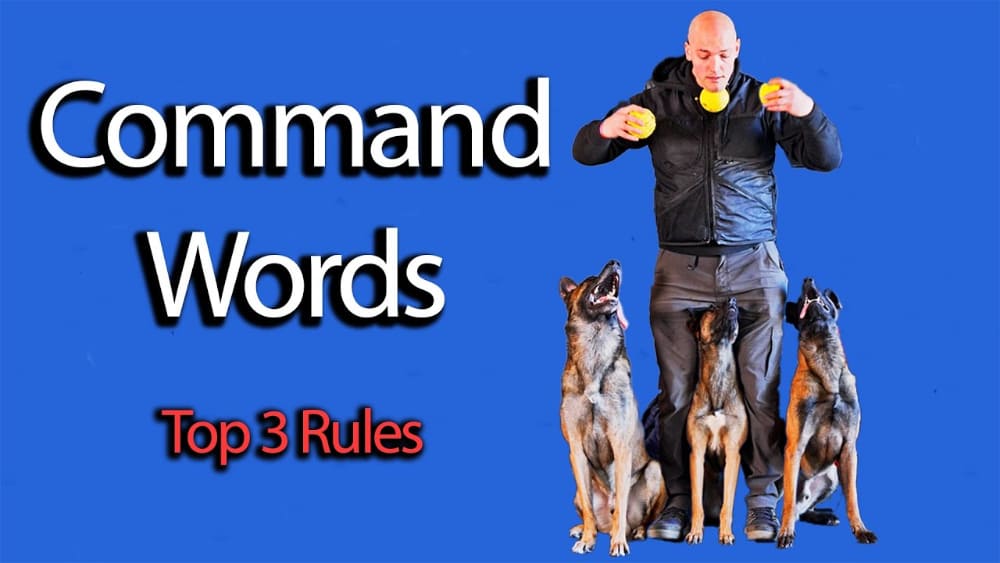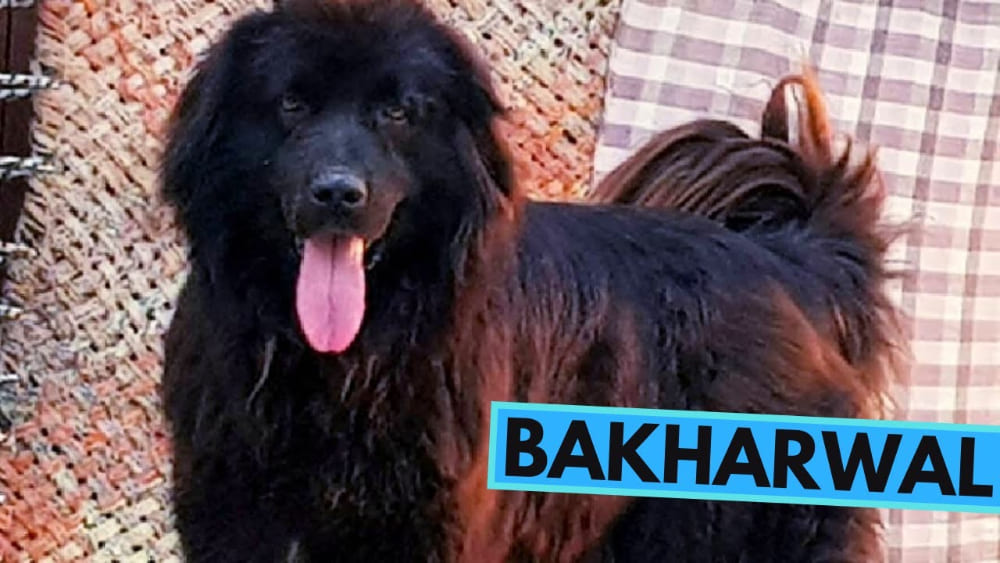Dogs are true learning sponges (albeit with less water and more fur). But how far does their ability to understand commands go? In this article, we will explain step by step how to train your canine and everything a dog can learn, what influences his learning process and how to help him to reach his full potential. We’ll also see how many tricks he can assimilate in a single day, play with a list of words he can understand and, as icing on the cake, we’ll share 100 commands to take your dog from being a good boy to a true four-legged prodigy.
The Average Number of Commands a Dog Can Learn
On average, a well-trained dog can learn between 20 and 30 commands, although some furry brainiacs have even managed more than 100. It all depends on factors such as breed, character and, of course, the human’s talent when it comes to teaching. Not all dogs are the same, so the number of commands they can learn varies quite a bit. The important thing is to have patience and plenty of cookies on hand!
According to renowned dog expert Dr. Stanley Coren, the average canine can learn about 165 words (including signs), while “superdogs” – the elite of the doggy world – can manage up to 250. This means our four-legged friends not only understand more than we think, but some might even beat us at a word game…. Or at least at remembering where we hid the cookies!
Factors Affecting a Dog’s Ability to Learn Commands
Several factors can influence the number of commands a dog can learn:
Breed
Some breeds are more applied in the art of training and learn commands more easily. For example, while a Border Collie looks ready to run a circus, a Bulldog may look at you with a “what’s that for?” face.
- Labrador Retrievers are star pupils: quick to learn and always ready to impress in obedience and agility (especially if treats are involved).
- Border Collies, with their intelligence and eagerness to please, seem born for advanced training. If there were a canine university, they would be the honors nerds.
- Bulldogs, on the other hand, prefer to take life easy. They will learn, yes… but at their own pace and only if they think it’s worth the effort. Patience, human!
Age
Young dogs are like sponges: curious, restless and ready to soak up new tricks (and sometimes your shoes). Older ones can learn too, but with a little more patience and motivation…especially if the reward is irresistible enough. For example:
- A 6-month-old puppy is like a furry sponge ready to soak up new tricks, while older dogs sometimes have the “software” a little more installed. Plus, they come with extra battery life that makes them learn with more bouncing and less yawning.
- An older dog with arthritis or reduced mobility may not be able to do circus-worthy pirouettes, but with the right techniques and a little patience, he can still learn new tricks… at his own pace and without marathons included.
- An adult dog without much training may need the extra reinforcement of patience and motivation… but with the right encouragement, he’ll soon discover that learning has its rewards, too.
Temperament
The learning capability of dogs depends on their personality because dogs exhibit similar sensitivities and temperament to humans. For example:
- Shy or nervous dogs need a gentle, patient approach-clickers, positive reinforcement and lots of “good boy!” can work wonders.
- Outgoing and confident dogs are the adventurers of training, always ready to try something new (especially if play is involved).
- Hyperactive dogs may find their true calling in sports like agility or flyball…or any activity that allows them to expend energy without destroying the house.
Previous Training Experience
Dogs that receive training with good vibes and consistency are often more motivated to learn new tricks, while those with less happy experiences may become more hesitant or look at commands with a “really again?” face.
A dog that has had consistent, positive training may be so excited to learn new tricks that it almost seems to say, “Come on, human, give me something more challenging!”
Conversely, dogs that have gone through rougher training, with punishment-based techniques, may become more insecure or fearful, as if thinking, “Now what did I do?” They require more patience and a calm approach.
However, a dog that has never had lessons before may need a basic “well behaved dog” course before launching into more advanced tricks, because running before learning to sit does not usually end well.
How Many Tricks Can a Dog Learn in a Day?
Many factors influence how many tricks a dog can learn in a day, such as its breed, age and whether it is already experienced or still wondering what “sitting” is. Some pick up several tricks in the blink of an eye, while others need more time to catch on. Also, the amount of training they endure depends on their age, attention span and how much they have left in their energy tank before they go on nap strike.
For effective learning, the ideal is to focus on one or two tricks per session and keep them short, between 5 and 15 minutes, depending on how long the four-legged learner’s concentration lasts. This way we prevent them from going from “I’m learning!” to “This again? I’d better take a nap.
Treats, praise and play are like the “winning combo” of positive reinforcement: they help motivate the dog and make learning more fun. After all, who wouldn’t work better if they were paid with treats and a party?
A dog who learned more than 1,000 words: Chaser, the Border Collie
Chaser, a Border Collie with more vocabulary than many of us have before morning coffee, surprised the world by learning the names of more than 1,000 objects, as well as various commands and behaviors.
Her owner, Dr. John Pilley, a retired psychology professor, spent several hours a day training her with positive reinforcement-basically, praise and well-deserved treats. Over time, Chaser became adept at identifying objects, following instructions and leaving more than a few people wondering if she also corrected spelling.
His amazing learning ability made it clear that dogs have great cognitive potential and can be trained to impressive levels. Basically, Chaser proved that dogs not only learn “sit” and “give me a paw”, but that they can also be real brainiacs… with tails.
List of Words Dogs Can Understand
Dogs can understand a wide range of words and signals. The phrases and words that dogs typically comprehend are listed below:
- Sit
- Stay
- Down
- Come
- Heel
- Fetch
- Could you leave it?
- Drop it
- Roll over
- Shake
- High five
- Speak
- Quiet
- Stand
- Wait
- Off
- Could you find it?
- Go to your bed
- Watch me
- Let’s go
Naturally, this is a partial list, and each dog’s vocabulary will vary depending on their training and individual experiences. Some dogs may even understand over 100 words, as mentioned earlier.
100 Commands to Teach Your Dog
Here’s a list of 100 commands you can teach your dog, from basic “sit” to tricks so advanced they’d earn your dog a college degree in “Canine Astrophysics”.
- Sit
- Stay
- Down
- Come
- Heel
- Fetch
- Could you leave it?
- Drop it
- Roll over
- Shake
- High five
- Speak
- Quiet
- Stand
- Wait
- Off
- Could you find it?
- Go to your bed
- Watch me
- Let’s go
- Spin
- Bow
- Crawl
- Back up
- Hold
- Catch
- Touch
- Jump
- Hug
- Kiss
- Wave
- Beg
- Play dead
- Take a bow
- Open the door
- Close the door
- Turn off the light
- Turn on the light
- Put away toys
- Bring the remote
- Get the newspaper
- Carry groceries
- Help with laundry
- Put trash in the bin
- Retrieve items on command
- Balance a treat
- Walk backward
- Walk between legs
- Jump through a hoop
- Weave through poles
- Climb a ladder
- Walk on a balance beam
- Push a button
- Ring a bell
- Skateboard
- Play soccer
- Play basketball
- Hide and seek
- Dig on command
- Stop barking on command
- Potty on Command
- Go to a specific location
- Take a specific route
- Follow a scent
- Track an object
- Alert to specific sounds
- Perform a particular behavior when asked
- Discriminate between objects
- Identify specific people
- Perform behaviors in a sequence
- Retrieve a separate entity from a group
- Match objects
- Count
- Identify shapes
- Identify colors
- Solve puzzles
- Learn sign language commands
- Respond to whistle commands
- Respond to hand signals
- Perform a specific task when given a cue
- Recognize and respond to particular situations
- Assist in an emergency
- Perform service dog tasks
- Perform therapy dog tasks
- Perform search and rescue tasks
- Perform scent detection tasks
- Perform herding tasks
- Perform agility tasks
- Perform obedience tasks
- Perform tricks for entertainment
- Perform tasks for dog sports
- Respond to cues from a distance
- Perform tasks with distractions
- Perform duties in various environments
- Perform functions in public places
- Adapt to new situations
- Learn from other dogs
- Learn from watching videos
- Learn from observing humans
- Learn to learn
Remember that patience and consistency are key in training. And, of course, positive reinforcement is infallible… because your dog responds better to rewards and praise than to a motivational lecture.





